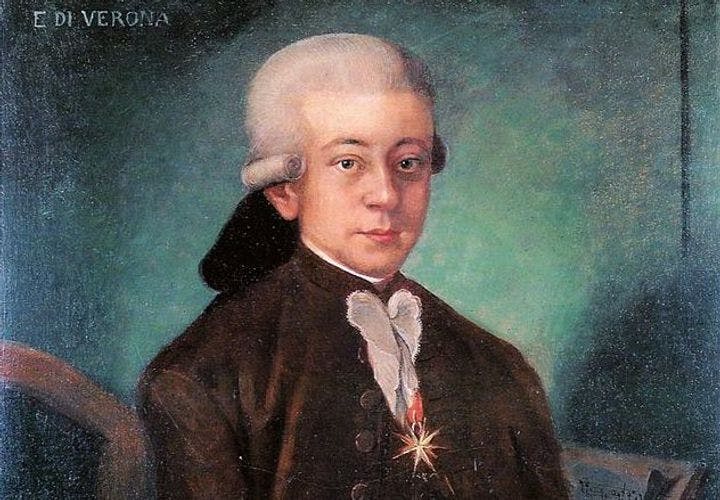Fall 2012
Mozart versus the Vatican
– The Wilson Quarterly
Mozart's Miserere.
It's Good Friday, 1770. Pilgrims have filled the Sistine Chapel for the rite of the Tenebrae. At the altar, the priest is extinguishing the candles meant to represent Christ’s life on earth. Ringing through the chapel is one of Europe’s most famous pieces of sacred music, Gregorio Allegri’s 17th-century work Miserere Mei, a polyphonous choral setting of Psalm 51. Among the rapt pilgrims are 14-year-old Wolfgang Mozart and his father, Leopold. Young Mozart is not just transfixed by the music; he is committing it to memory. After the service, he will transcribe the score of the coveted work, executing a prodigious feat of musical mastery.
It will also be a major affront to the Roman Catholic Church. The church so highly prized the Miserere Mei that anyone who copied even a part of it risked excommunication, writes Kelly Grovier, a poet and cofounder of the European Romantic Review.
The work’s significance goes back to Psalm 51’s origins as an act of penance by King David for committing adultery. Later, in medieval London’s criminal underworld, Psalm 51 became known as the “Neck Verse”; the ability to recite its lines to jailers could free the convicted of the death penalty. At the end of the 15th century, the psalm was elevated to a new level of fame: Days before his execution at the hands of Vatican agents, Florentine preacher and reformer Girolamo Savonarola produced a bracing commentary on the work that quickly became an influential Christian text.
And so King David’s creation “was already vibrating with mystical, personal, and political significance” by the time Italian composer Allegri reworked a young polyphonist’s musical setting of the psalm and brought it to a large audience. The piece was performed by two asymmetrical choirs, one with four members and one with five. The arrangement used the “previously underappreciated harmonies of the 5:4 ratio,” Grovier writes, “a proportion which was soon being seized on by contemporary artists and intellectuals as constituting a mathematical link between the spiritual and phenomenal worlds.” The performance of the work at the venerated Tenebrae service further heightened its spiritual meaning.
The Miserere Mei also resonated with the space in which it was first performed, the Sistine Chapel. Michelangelo had used a 5:4 ratio in laying out the frescoes of biblical scenes and other decorative features. This unique “interdependence of eye and ear” may have been one reason the church was so insistent that the piece not be performed outside the Sistine Chapel’s hallowed confines.
In the end, Mozart skirted the wrath of the Vatican. But his replication of the Miserere Mei was unprecedented in more ways than one. In what was essentially “the first illegal download in musical history,” Grovier writes, “Mozart’s crime set in motion an ever-accelerating popular compulsion to possess the unpossessable.”
THE SOURCE: “Secret Harmony” by Kelly Grovier, in The Times Literary Supplement, June 8, 2012.
Cover photo courtesy of Wikimedia Commons
